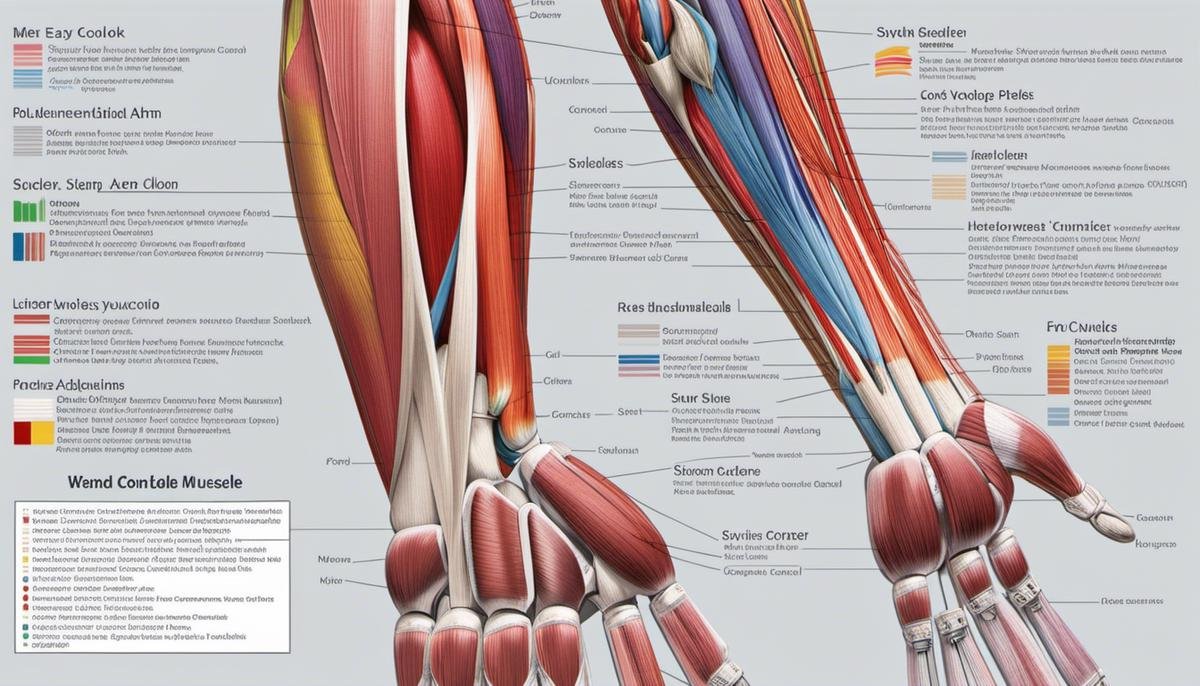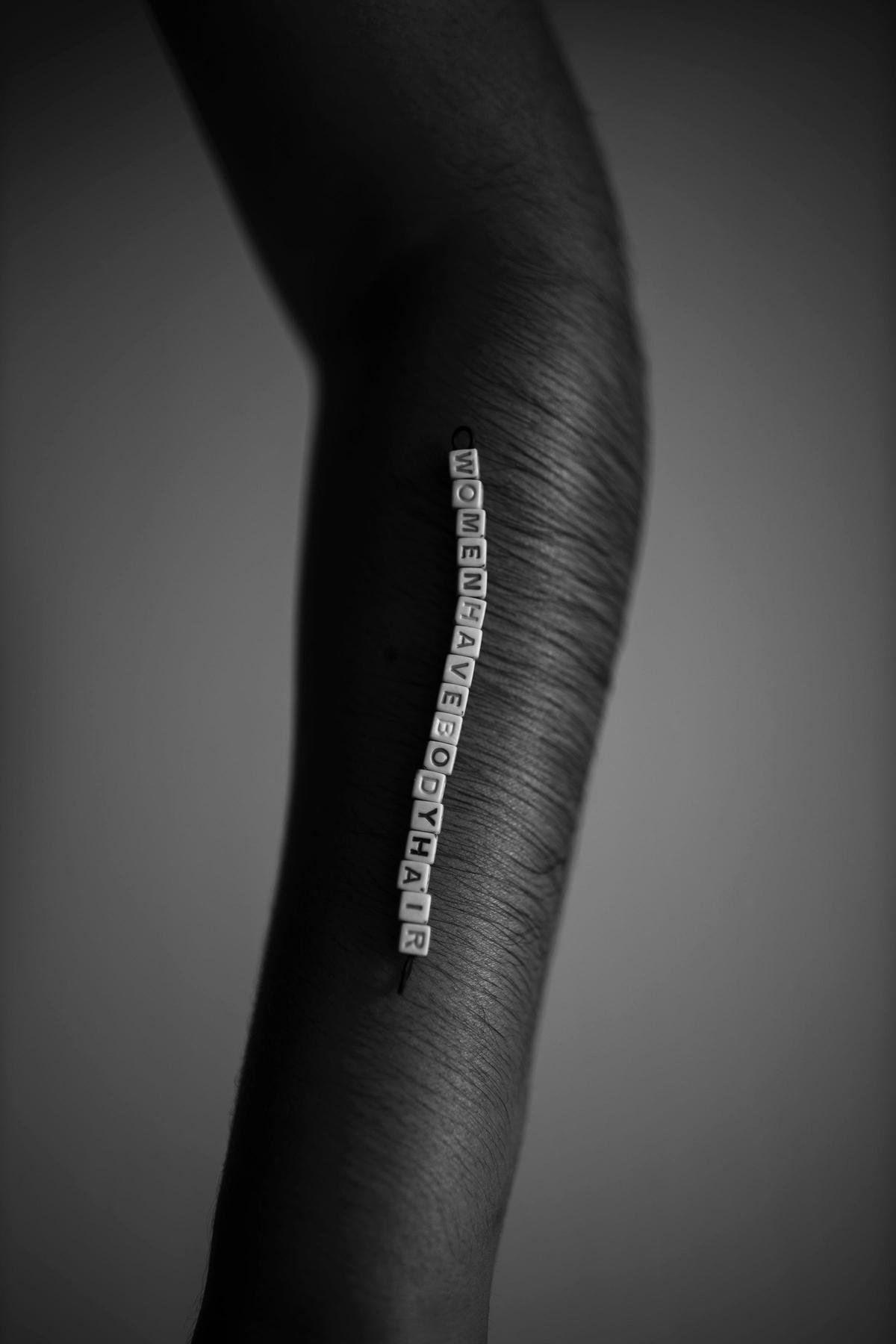The human arm, a staple of physical strength and beauty, is made up of complex structures that together establish its size and shape. From the bulging biceps to the long and lean triceps, the anatomy of the arm plays a crucial role in its overall dimension. When it comes to taking measurements, having a well-versed understanding of these components is critical. Furthermore, possessing the proper measurement tools goes hand in hand with that knowledge. A flexible measuring tape or body calipers, if used correctly, can provide accurate and reliable measurements. However, equipping oneself with these tools and mastering their usage involves a careful learning process. Beyond the measurement technique itself, the interpretation and implication of these measurements in terms of overall health and fitness also need detailed elucidation. Whether you are a fitness enthusiast or a health-conscious individual, understanding the average arm girth for different age groups, sexes, and fitness levels can offer you insights into your well-being.
Understanding Arm Anatomy
Understanding the Anatomy of Your Arm
The first step towards understanding your arm anatomy is learning about the different muscles that make up this part of your body. These muscles contribute to the shape, strength, and function of your arm.
The Biceps
The biceps, formally known as the biceps brachii, is perhaps the most well-known muscle in the arm. It is a two-headed muscle, meaning it has two points of origin or “heads” at the top of the arm. These heads are called the short head, and the long head. When you flex your arm at the elbow, the biceps contracts and causes your arm to bend. This muscle not only aids in the movement of your elbow but also helps rotate your forearm.
The Triceps
The triceps brachii is located on the back of the upper arm, opposite the biceps. It is called triceps because it has three points of origin or “heads”. They are named as the long head, lateral head, and the medial head. The primary function of the triceps is to extend the elbow, meaning it straightens the arm out from a bent position.
The Brachialis
The brachialis muscle, situated underneath the biceps, plays a crucial role in forearm elevation. It is a potent flexor of the elbow joint, regardless of the positioning of the forearm. Since it is hidden under the biceps, it does not contribute significantly to the arm’s aesthetics; nonetheless, its strength cannot be overlooked.
The Coracobrachialis
The coracobrachialis is another essential arm muscle. It’s located in the uppermost part of the arm, and it assists in drawing the arm forward and toward the body. This muscle isn’t as prominent as the biceps or triceps but plays a significant role in arm movement.
Role of Arm Muscles on Shape and Size of Arm
Understanding how these muscles work provides insight into why the upper arms are shaped the way they are. For instance, if the biceps are well developed, they give the front of the arm a rounded, muscular appearance. Similarly, a well-developed triceps muscle will add a bulky look to the back of the arm. Moreover, the size and shape of your upper arm will also depend on individual differences in muscle development, genetic predisposition, and the level of physical activity or weight training.
Always remember, no two individuals’ arms are identical. Even though we all have the same core muscles, variations in genetics and lifestyle lead to differences in muscle size, and therefore, arm girth. By understanding the anatomy of your arm and the roles of these muscles, you can best identify strategies for maintaining a healthy arm size.

Acquiring Measurement Tools
Acquiring the Right Measurement Tools
Before you can measure your upper arm girth, you need to get your hands on the right equipment. The most commonly used tools for this task are a flexible measuring tape or body calipers. Each of these tools has its own distinct features, uses, and places of purchase.
Flexible Measuring Tape
The flexible measuring tape is a very versatile tool. It’s easy to use, affordable, and accessible. With a flexible measuring tape, you can wrap it around your upper arm to get an accurate girth measurement. It’s not only ideal for body measurements but also for other tasks such as clothing measurements or crafting. The best feature of a flexible measuring tape is its flexibility, which allows it to measure round areas, like your arm, with ease.
You can purchase a flexible measuring tape at a variety of stores. Check at local sewing shops, supermarkets, or hardware stores. Online retailers such as Amazon and eBay also have a wide selection of measuring tapes to choose from.
Body Calipers
Body calipers are another tool you can use for measuring upper arm girth. These are more specialized tools used primarily in gyms or by health professionals to measure body fat percentage. Body calipers work by pinching the skin and fat together, then measuring the thickness of the fold. While they are less common and more expensive than a flexible measuring tape, they can provide a more in-depth look at body composition.
Body calipers can be purchased through sports and fitness stores, or online retailers. Be sure to read reviews and check the product description to make sure the calipers can be used for body girth measurements.
In conclusion
when choosing the right measurement tool, consider your needs and your budget. A flexible measuring tape is a cheaper and more versatile option, while body calipers can provide a more in-depth look at your body composition and fat percentage. However, both tools will provide an accurate measurement of your upper arm girth.

Measurement Technique
Understanding the Importance of Arm Girth Measurement
Arm girth measurement is a useful technique to evaluate the muscle mass or fatness of the upper arm. It can be used as an indication of muscle growth or fat loss over time. Accurate measurement is critical to ensure the most reliable data.
Preparation Before Measurement
Before you start, ensure you have a flexible, non-stretchable measuring tape. A cloth or plastic tape measure that’s typically used for tailoring purposes works best. Make sure to remove any clothing from your arm. The arm should be relaxed and at the person’s side.
Where to Place the Tape
To measure arm girth, locate the midway point between the shoulder (acromion process) and the elbow (olecranon process). The tape measure should then be wrapped around this midpoint. It’s easier to have another person place the tape correctly, but it can be done alone using a mirror to ensure correct placement.
How Tight the Tape Should Be
The tape should be snug around the arm but not tight or cutting into the skin. It’s important to place the tape parallel to the floor, not at an angle. The tape should be in firm contact with the skin all the way around the arm. However, it shouldn’t be so tight that it compresses the underlying soft tissues, as this would provide an inaccurate measurement.
How to Interpret the Results
Once the measurements are taken, they can be used as a reference point for future measurements. Any increase or decrease in girth can be indicative of a change in muscle mass or fat content. It’s useful to take repeated measurements at the same spot over time in consistent conditions (same arm, same position, same time of day, etc.) to track changes.
Practice the Technique
For accurate results, this measurement technique should be practiced. The positioning of the arm should remain consistent with each measurement. Always ensure the tape is level and not twisted. It may be beneficial to take several measurements and use the average in case of any slight differences in the tape’s placement.

Photo by teofromrio on Unsplash
Implication of Measurements
Upper Arm Girth and Health Indicators
Upper arm girth, or circumference, refers to the measurement around the largest part of your upper arm, typically the mid-point between your elbow and shoulder. For health and fitness purposes, this measurement often serves as a key indicator of your body composition in terms of muscle mass and fat.
Average Bicep Size by Age and Sex
Typically, the standard arm size for adults varies significantly by age and sex. For men, the average bicep size tends to be around 13 inches (flexed) at age 20, increasing to about 15 inches by the late 30s, after which it gradually declines. For women, the average bicep size hovers around 11 inches (flexed) at age 20, increasing slightly to 12 inches by late 30s, and then slowly decreases in the subsequent years.
Influence of Fitness Levels on Arm Girth
Fitness levels also play a significant role in determining the size of the biceps. An individual participating in regular weight lifting or strength training exercises generally boasts a larger arm circumference than a person with a more sedentary lifestyle. For instance, bodybuilders and athletes often have a far greater bicep size, anywhere from 16 to 22 inches, compared to the average populations.
Implications of Largely Deviant Measurements
A greatly deviant measurement from the average size could imply various health and fitness conditions. Extremely large arms might imply a high level of fitness and muscular development, especially when combined with a low level of body fat. However, if a high arm girth measurement is accompanied by a high body fat percentage, it could suggest an overweight or obese condition. Conversely, a smaller arm girth measurement may suggest a lower amount of muscle mass, potentially indicating undernutrition or low levels of physical activity.
Importance of Arm Girth in Physical Health Assessments
Measuring arm girth is an essential component in assessing physical health. Healthcare practitioners use it, along with assessments of other body measurements, like waist circumference and body mass index (BMI), to evaluate an individual’s overall physical health, nutritional status, and fitness level.
Regular Monitoring to Stay Within Normal Ranges
It is recommended to regularly monitor your upper arm girth along with other essential health metrics. Understand what the normal arm size is for your age, sex, and level of physical activity. Aim to stay within this normal range to maintain a balanced body composition of lean muscle and fat. It’s crucial to consult with a healthcare professional or fitness coach for personalized advice regarding your arm girth measurement and its implications for your health and fitness.

Photo by ihadissafari on Unsplash
In this exploration of arm girth measurement, we have traversed through the intricate paths of the arm’s anatomy, familiarized ourselves with the measurement tools and techniques, and glimpsed into the connotations of various measurements. It is our appropriate understanding and accurate application of these aspects that arm us with the toolset to examine our physical fitness or health conditions accurately. And remember, though sizes can indicate some aspects of health and fitness, they should never be regarded as the sole determinant. A healthy body is the product of balanced nutrition, regular exercise, ample rest and a positive mindset. Valor lies not in the girth of our arms, but in the breadth of our knowledge and the depth of our understanding of our bodies.
